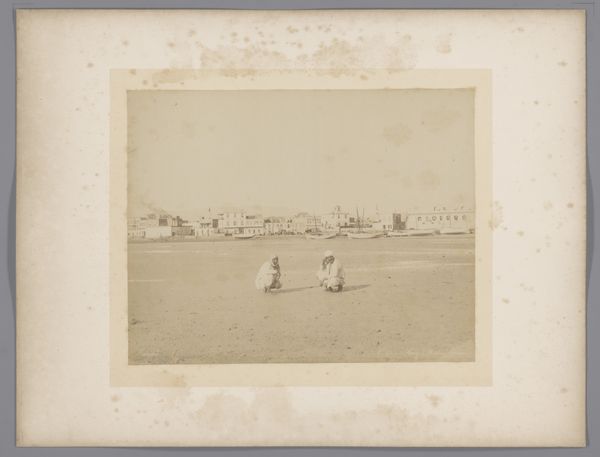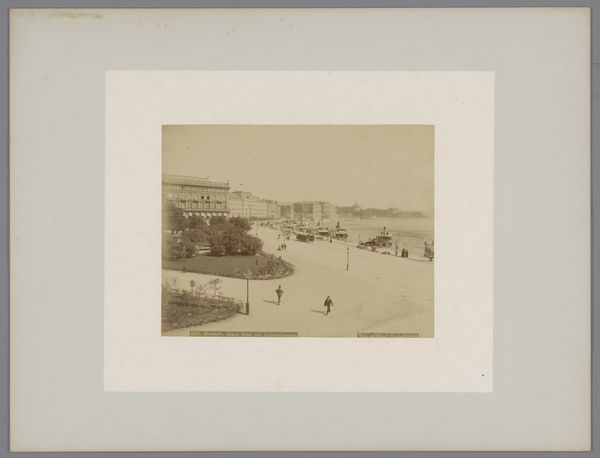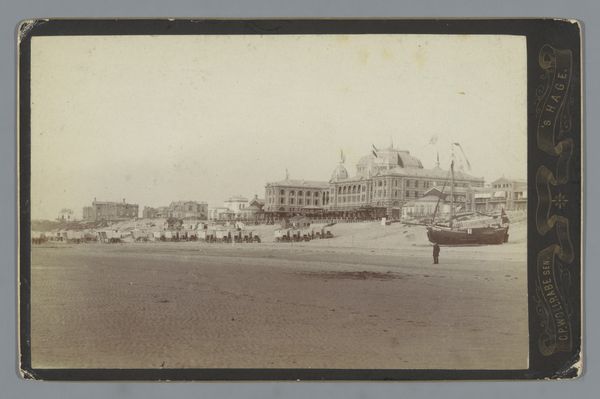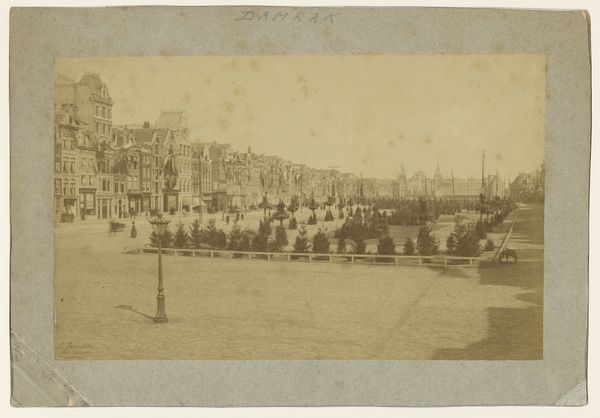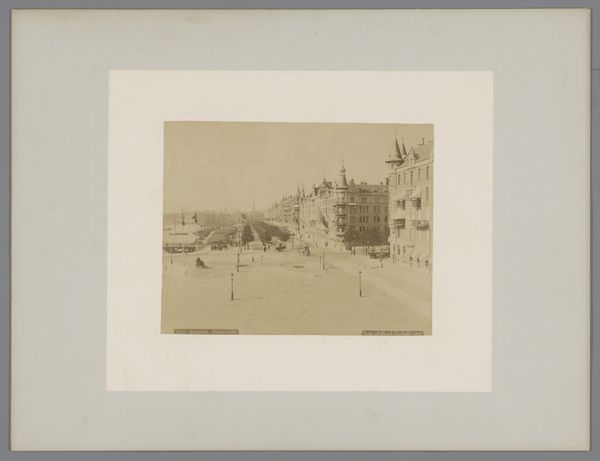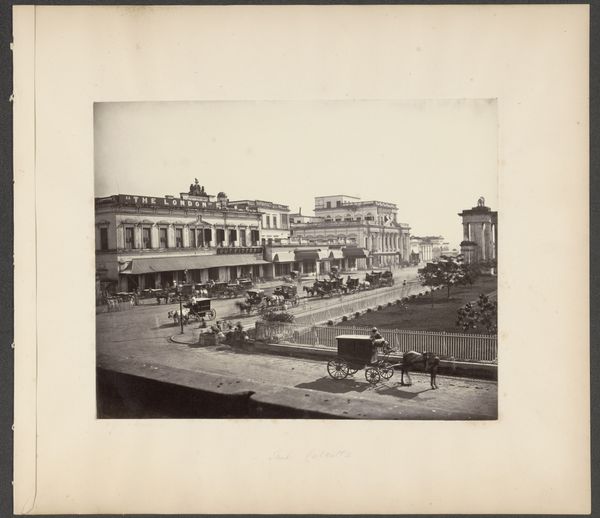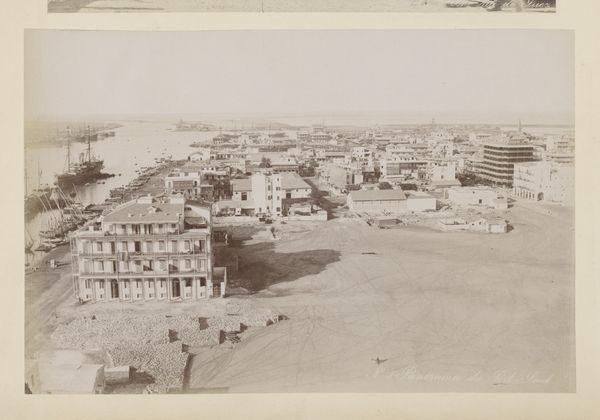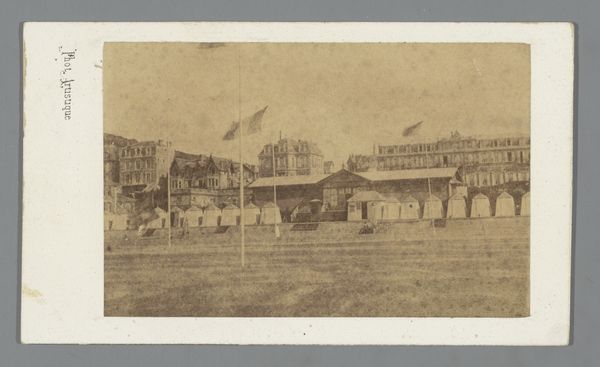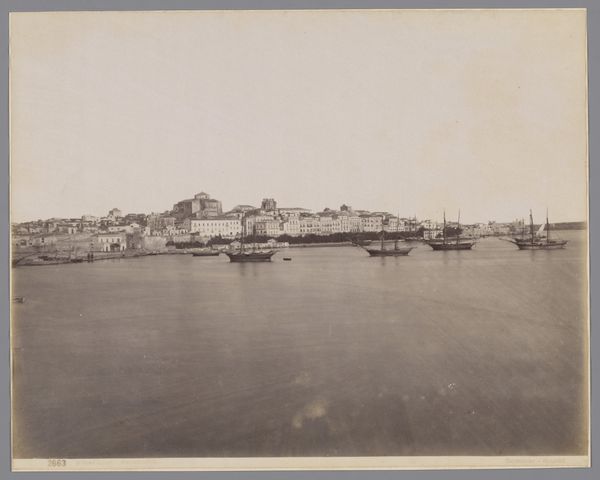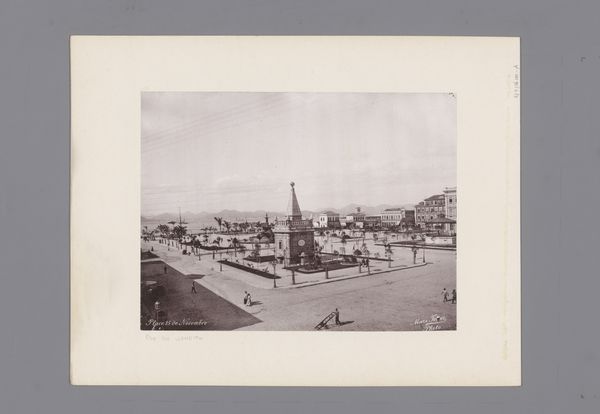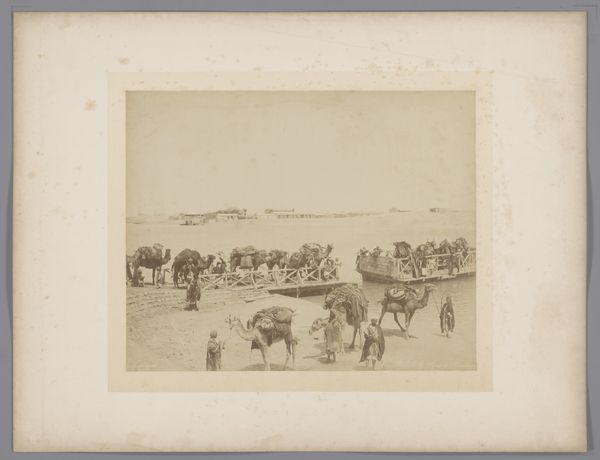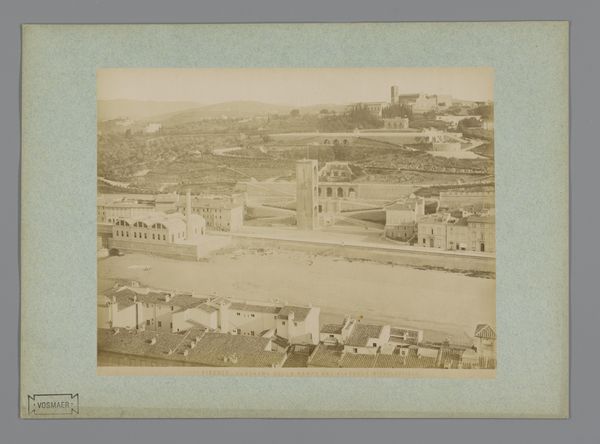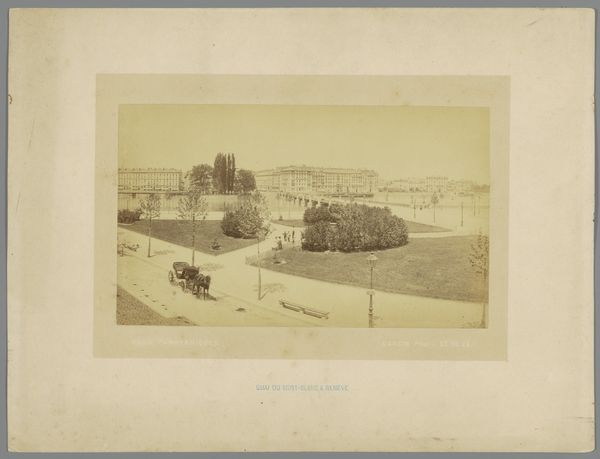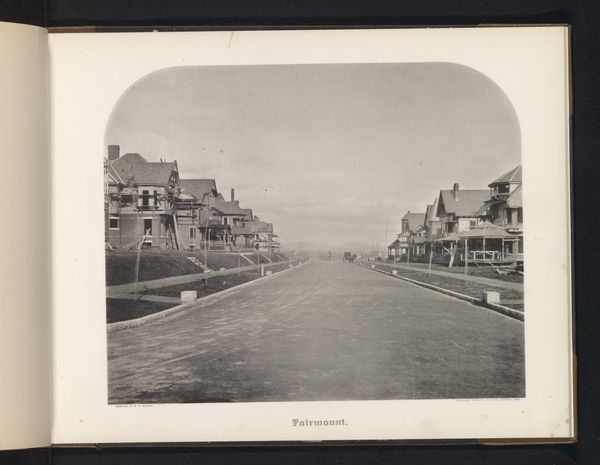
photography, albumen-print
#
pictorialism
#
landscape
#
street-photography
#
photography
#
cityscape
#
albumen-print
Dimensions: height 265 mm, width 350 mm
Copyright: Rijks Museum: Open Domain
Curator: Étienne Neurdein’s "Gezicht op het strand bij Malo te Duinkerke," or "View of the beach at Malo-les-Bains, Dunkirk," captured in 1897. It’s an albumen print. Editor: Immediately, there's a certain quietness about this beach scene despite the figures populating the shore. The tonal range creates an almost dreamlike atmosphere. Curator: The albumen print process lends itself to that softness. It was popular for its ability to capture minute detail but often at the cost of contrast. Neurdein really exploits that. Also, consider Malo-les-Bains, during this time, was becoming a very fashionable resort. We're seeing the rise of leisure culture reflected in photography. Editor: Yes, fashion is definitely visible here: The careful groupings of figures, each absorbed in their seaside activity, suggest carefully constructed social tableaux, which, I would assume, had a specific meaning back then, now not so apparent. The symbolism of leisure, perhaps? The water itself acts almost as a mirror, reflecting and amplifying the society at play. Curator: Precisely. Also, consider the compositional choices – the pier acting as a visual anchor. Think of what this resort was meant to represent to its wealthy patrons. Freshness, cleanliness, escape, but also, very pointedly, class distinction. Editor: You can definitely read the underlying power dynamics in these carefully positioned bodies and architecture in the backdrop. Is it simply a record, or does the image, through its aesthetic choices, endorse the scene, in its time? The question then becomes about how those same codes now become triggers for further readings... Curator: Yes, an important question! The albumen print itself signifies a certain societal context; this technique was commonly used for commercial and tourist photography. Neurdein skillfully bridges that gap here, producing something that transcends a mere snapshot and becomes a document, loaded with visual codes. Editor: Seeing those ghostly buildings hovering at the horizon now almost feels like a statement about time itself and the fragile relationship we have to it. Curator: A lovely perspective. It reminds us to be attentive to those transient echoes, to remember what came before as we interpret what we see now.
Comments
No comments
Be the first to comment and join the conversation on the ultimate creative platform.
